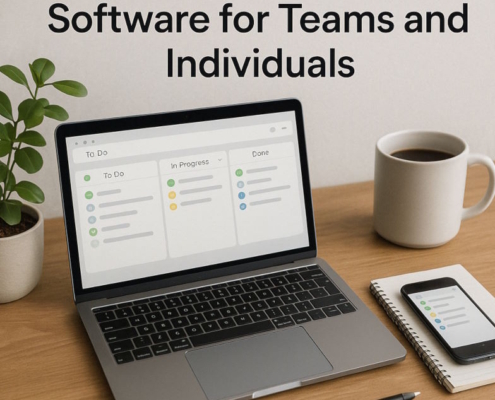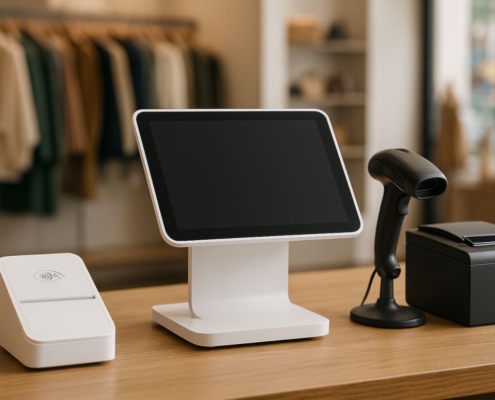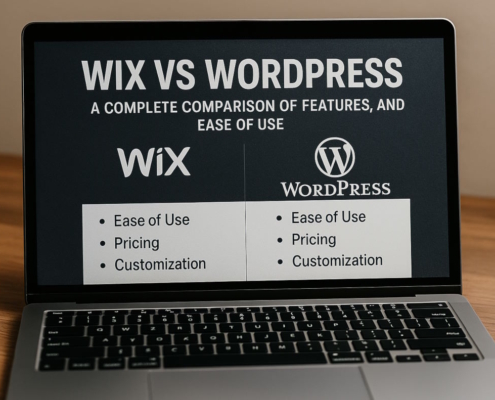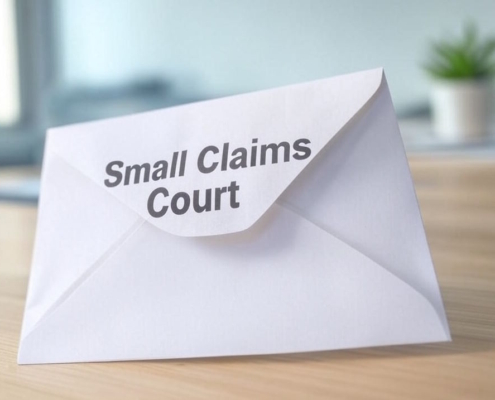Introduction
A short-term financial gain is not exactly the same as creating a long-term, sustainable business.
Let us look at exactly what I would do if I were to start a business with no money, no connections, no experience, and no ideas.
Be advised that launching a business requires effort. It will take time to figure out how to make your ideas a successful business.
Building a real business and reading this post is not for you if you want to get rich quickly. Are you prepared to put in the work, create something amazing, and enjoy the fruits of your labor? Read on!
Step 1: To get started without funds, come up with an idea
Everyone, in my opinion, has a business idea. Where did you find this concept? It occupies a curious space between something that you ARE prepared to work at, something that you understand, and something you are passionate about.
You’ll note that I didn’t say “discover your passion.”
It is not enough to just launch a business based on a passion. You will only be creating stuff for yourself if you haven’t assembled a tribe of like-minded individuals. That’s certainly not an adverse outcome, but the topic of this post is how to start a business with no money and grow it strategically from the ground up.
How to use an exercise I term “Thrusness” to come up with a profitable business idea
Take a sheet of paper and list items in three columns. Do not make a Google or Excel spreadsheet. Make a handwritten list. There’s something about putting thoughts on paper that makes them more conducive to innovation. Try to concentrate on this job for at least 15 to 20 minutes, removing any other distractions. This practice, which we’ll call “Thrusness,” is enjoyable and fosters creativity.
The following three columns need to be filled out for Thrusness:
Ten activities you enjoy that can be considered work-related (e.g., painting, writing, singing, making furniture, coding websites, assisting elderly women in crossing the street, etc.)
Ten ways to make your work visible (e.g., e-commerce site, retail store, online course, face-to-face class, series of publications, videos, etc.)
After going over the initial two columns, try to jot down ten business ideas in the final one. One possibility is to instruct a painting class. One option would be to start an online business selling distinctive furnishings. Just write out ten suggestions.
I’d like to be very clear about the next thing.
During this initial exercise, you might not come up with your big idea. It’s alright!
The initial draft of any book, article, or other piece is comparable to this stage. Most likely, it will be awful. The goal is to complete the steps and give your brain room to begin working.
Feel free to get together with a few others and conduct a brainstorming session if you’re feeling very advanced.
Step 2: Read books as the second step in starting a business without any funding!
In the current digital era, Eric Reis’s book The Lean Startup is the one I strongly suggest to anyone looking to start a business with no money. Eric’s book isn’t going to blow you away. (Hey, I’m trying to be truthful.) Instead, it will teach you the ins and outs of starting a business in the fast-paced world of today, rather than the industrial era of the past.
I also think Pam Slim’s Body of Work is a great book. I was unsure of what I would be going to accomplish in my life after closing IWearYourShirt, so this book was a huge help. I would suggest purchasing a paperback copy of this book. I apologize to Kindlers, but Pam has some amazing exercises that readers can complete within the book.
Finally, any Seth Godin book will do. Even one. By now, he has probably written 452. Because of his extraordinary intelligence, Seth’s writings are as full of useful information as they are inspirational. You should get one for yourself.
A word of advice regarding reading books when attempting to launch a business on a shoestring.
Avoid going overboard or letting the reading go on forever. When ingesting another individual’s content, many people will become disoriented. Consuming will lead them down an infinite rabbit hole because it’s simpler than actually creating something or beginning something themselves. Restrict the number of books you may read and the time you can spend reading them.
You ought to be able to finish three books in two weeks, regardless of whether you’re working a 9 to 5 job, have thirteen kids, or are just too occupied to read.
Step 3: Overcome your self-doubt to launch a business
Proceed to step 5 if you have a few ideas and no self-doubt. Feel free to proceed.
I’d like you to know one crucial thing if you are having self-doubt: You aren’t alone! Whether you’re trying to start a business with no money or build your tenth company, fear and uncertainty are part of the journey.
- Is this a good idea?
- Will my stuff be purchased?
- Will people assume my company is stupid?
- Will I earn any money at all?
- Will my idea be criticized by others?
- If I launch this business, would I wind up destitute, homeless, naked, and in a cave of scorpions?
If you are having self-doubt about launching a business, you aren’t alone.
One strategy I’ve used to get over my self-doubt and try to assist others do the same is to only evaluate myself after putting anything out in public. When you set something in the open, self-doubt usually goes away, but before you do, it tends to grow and fester. Additionally, reducing self-doubt gets simpler the more you send out into the outside world.
It is similar to achieving everything difficult in life. Doing it more often makes it easier.
If you were to decide tomorrow that you’d want to be an Oscar-winning actor or actress, you would be well aware that you would need to practice your profession for years, take acting classes, and get experience. Time is needed. You have to work for it. It requires making mistakes. For whatever kind of creation or enterprise, the same holds true. Instead of concentrating too much on attempting to be flawless, you should just get started.
Reduce the number of crutches you use when you’re scared or unsure. Regardless of your vice—overindulging in media, using video games as a diversion, or anything else. Limiting the amount of escape you can make compels you to act. Additionally, it makes you appreciate every article, book, or other item you read much more since you are aware that you are constraining yourself in order to share your abilities with the world.
Step 4: Have you got any ideas yet?
Go straight to step 5 if you did.
Do the first step again if you didn’t. If you haven’t thought of anything yet, go a long stroll or trek without using any electronics, including your phone. Leave all technology distractions behind and let your thoughts wander. There is room for creation.
Assume that by now you have a sort of business idea. The idea’s current status as either positive or negative is irrelevant. When launching a business, those terms are actually meaningless. Snapchat is real and worth $3 billion. Ideas are abundant, but the challenge is figuring out what to do next.
Step 5: Locate and identify possible clients
When you try to start a business with no money, connecting directly with potential clients is your best resource. Relationships, feedback, and early users are your capital at this point. It can be difficult to locate potential clients at first, particularly if they are not already on your mailing list or associated with you on social media. Don’t allow self-doubt to show up at this time. Recognize that it may take some effort and time to find and develop an audience.
If you’re scared of investing time and energy, you should definitely stop reading this post now and watch some YouTube videos instead.
I want to be very clear that buyers are not fans, subscribers, followers, or anything else.
The majority of your customers are total strangers who will pay you for an online activity.
When launching an enterprise with no funding, follow these four stages to identify potential clients:
- Speak with your loved ones; they have faith in you!
Send your loved ones bespoke emails that read something like, “I’m considering starting a business offering XYZ product to ABC person.” Do you know someone who would be willing to discuss this with me? Right now, I just want to speak with a potential client and hear their opinion; I’m not attempting to sell anything.
**Important: Avoid sending out bulk emails with this kind of request. Actually, forget about it; simply avoid sending bulk emails to people.
- Look up forums, blogs, or anything else that might be relevant to your topic on Google.
Until you’re doing something completely original (which I do not advise for your first firm), people will already be discussing the nature of your enterprise.
- Explain 90% of your knowledge regarding your business concept.
To draw in potential clients, openly share details about your company on a variety of platforms (subreddits, blogs/forums, Medium, LinkedIn groups, local meetups, Facebook groups, local meetups, etc.).
- It’s good to have competition.
For what reason? Because it implies that there is already an audience for what you’re selling. You have the intention to sell something that has already been bought by someone. It’s good, I assure you. Learn how to take advantage of competition by reading more.
Accepting unsolicited criticism from others or comparing yourself to other business owners is not appropriate at this time. Reactions can be harmful. Advice should only be considered seriously if the advice comes from someone who is either your potential client or has expertise in doing something you are doing. Anyone else’s feedback may wait.
Step 6: Engage in genuine conversations
Once you’ve located your target clients, engage in genuine dialogue with them. Sit down in coffee shops with others if you can. You can use video chat services like Skype, but ensure that you’re in person.
The dialogue you conduct with prospective clients ought to be like this:
- Ask plenty of questions and listen a lot.
- If you are prepared to do so, determine the person’s price limit and desire to purchase before attempting to persuade them to acquire anything.
- Determine the areas where they are experiencing pain.
- Make plenty of notes.
- Seek out trends.
You may hear people’s tones when you speak with them face-to-face or via Skype. You can appreciate the depth of their annoyance. It is possible to truly understand what matters most to them. Because there is no tone identification, you cannot obtain that through an email or survey.
Be careful not to take over discussions when you are speaking with others. To gather the knowledge you need to grow your business, you ought to be leading the conversation.
Step 7: Create the best and smallest possible version for your product
These days, there are outrageous business valuations, a ton of venture capitalists, and statistics showing that 90% of business founders fail within the first year.
If you’re looking to start a business with no money, you have to adopt the mindset of minimalism. Your initial business shouldn’t require funding. Heck, before attempting to secure investment, you should definitely still create a simpler version of your business, even if it is your fourteenth venture.
My IWearYourShirt company began with a $150 Flip Video Camcorder and roughly $100 worth of plastic hangers. I used bartering to build a website. I paid a $30 lunch to a photographer so they could shoot some expert pictures. This is referred to as “bootstrap.” You should put your best effort into this.
Making an email database is the one aspect of my business that I wish I had started sooner.
While the email algorithm remains constant, social media platforms do not. You will establish trust and solid relationships if you can provide someone with value and are able to send them emails on a regular basis. I would suggest this as the one marketing tactic for everyone who reads this blog.
Assumptions and clutching onto them like they are valuable gems are among the worst business blunders you can make. Lower your ego, pay attention to your clients, get input from your detractors (if they have done what you’re attempting to achieve), and be willing to make adjustments.
Having said all of that, begin with the most basic and smallest company model. You may have twenty things on your iPhone app’s highlight list. Awesome. Keep that in a secure location, but begin with a few of the things. Encourage usage of your app. Make it an expense. Check out what your consumers are really saying and doing.
Whatever you’re attempting to create, start small and just release a prototype of it to the public.
Step 8: Avoid attempting to expand too quickly at first
Many individuals aspire to launch with a powerful marketing and advertising plan. They want all of the tech articles, all of the media appearances, everything. Your company is not prepared for this.
You should concentrate on refining, molding, and developing the company with your initial paying clients. Prioritize creating something so exceptional that your initial clientele will refer you to your second clientele. If it does not, you should put a little more effort into improving the goods or services you offer.
There is no amount of promotion, PR, or marketing that can match the influence of word-of-mouth. Create something worthwhile to share and discuss. Why are you investing your time in a business that isn’t worth discussing or advertising?
Slow expansion is preferable to none at all!
Trying to sell and promote your company too quickly at an early stage is one of the worst blunders you can make. This can be compared to attempting to accelerate a train without any tracks on which to run.
Your train’s “tracks” are the main products or services that customers find valuable. It may take some time to determine what that value is, but you must get it right else a large number of people accessing your website, app, or product & having a negative experience could hurt your business’s overall performance.
Adopt a mindset of experimentation and embrace slower progress from an early age.
Step 9: Be honest!
This ought to be step 1 in all honesty, but I thought it would make for a good way to wrap things up.
Stop whatever you’re doing right away if you don’t care about the company you’re starting or the clients your company will serve. Some people might succeed with that kind of business, but not me or those who I want to reach with these writings.
Having a genuine concern for your clients and brand is not a strategy
This isn’t a tip. This isn’t a hack. If you’re an upright individual and you desire your business to improve someone’s life or the globe, then it should be a part of who you are.
While I’m not advocating for you to start the next UNICEF or Red Cross, your company should in some capacity help people and make their lives better.
Get over it if you don’t care about it. If you’ve launched a business and are considering quitting but are unsure if it’s the correct time, ask yourself, “Do I give a damn about this?” If the truthful response is “no,” it’s time to shut down. Take a break, reflect, and work on fixing whatever is wrong if the response is “yes.”
You are capable of doing this. Your concept is sufficient. You are sufficiently good. All you have to do is invest the effort, time, and perseverance.
Every business owner has difficulties from time to time
A few at first. Some are near the finish. Some people suffer all the time. You should persevere through difficult times simply because you are passionate about your work and it benefits both you and your clients.
Starting something from nothing can feel overwhelming, but you now have a roadmap. If you’re ready to start a business with no money, trust that it’s possible—many others have done it before you, and so can you.































